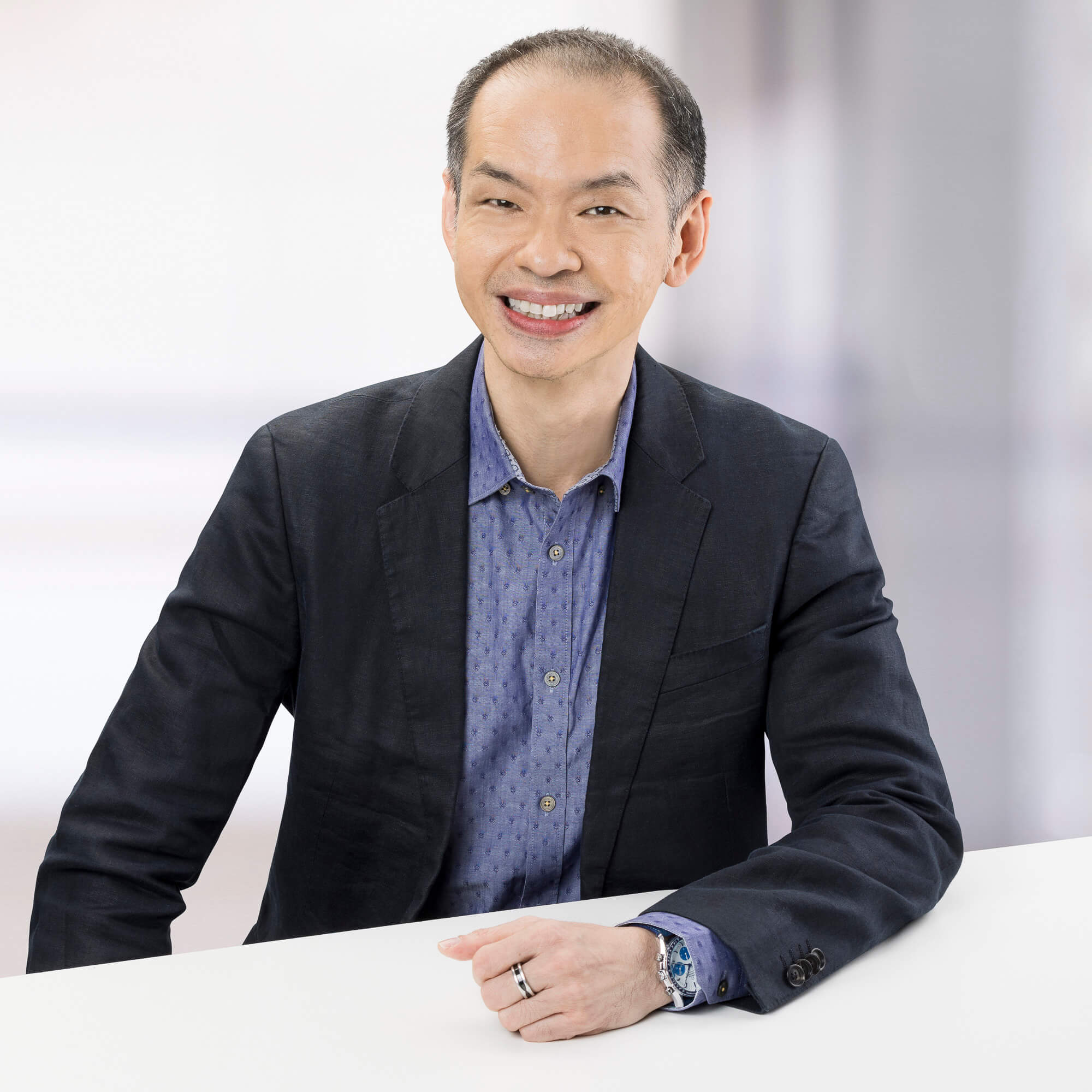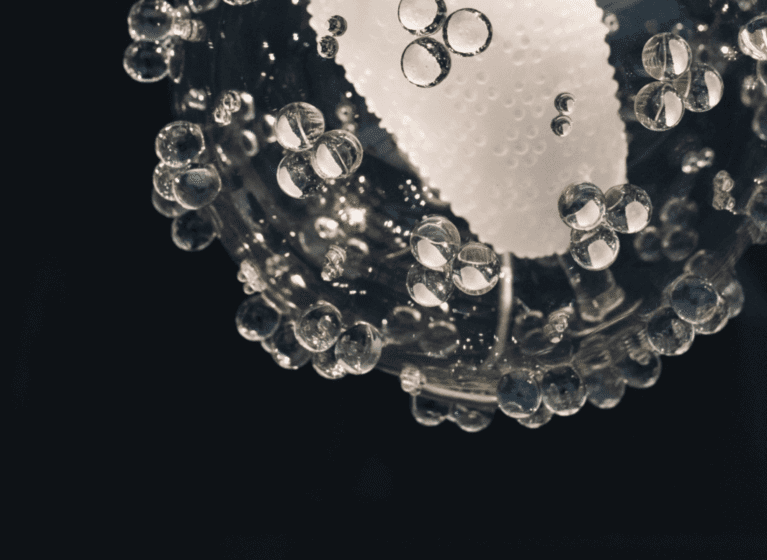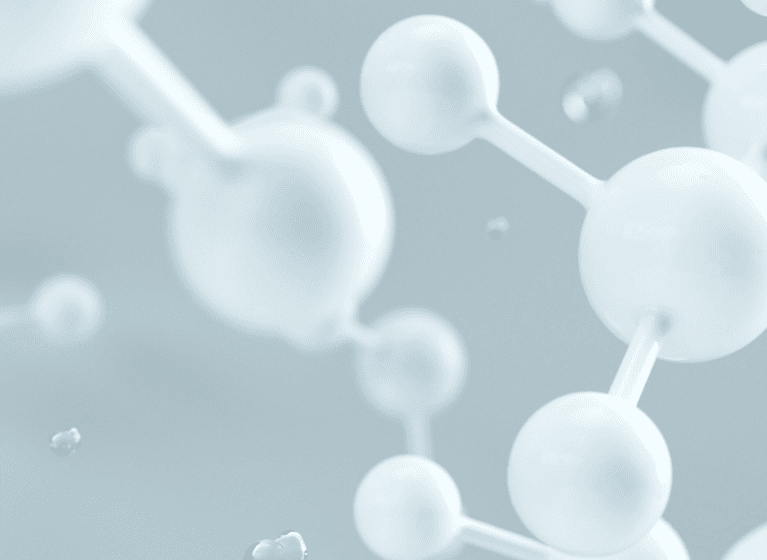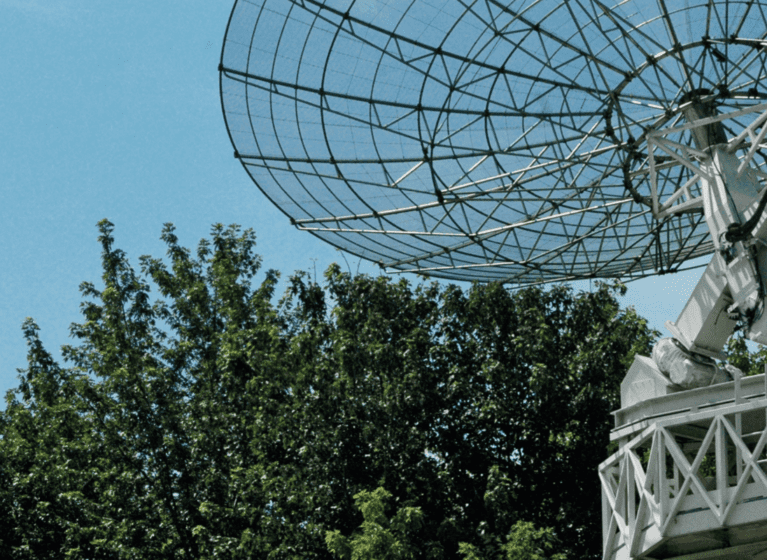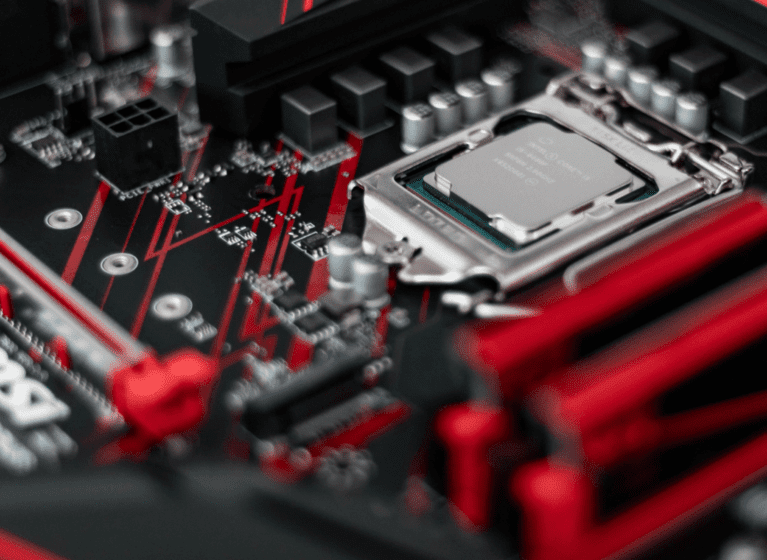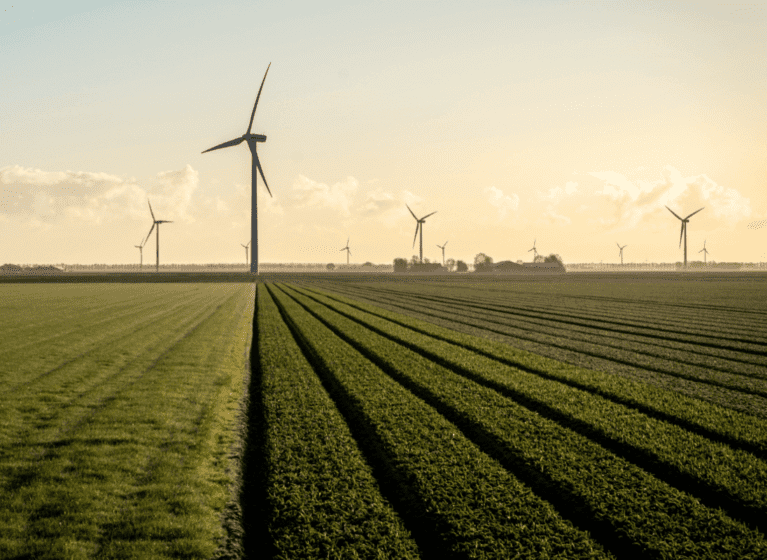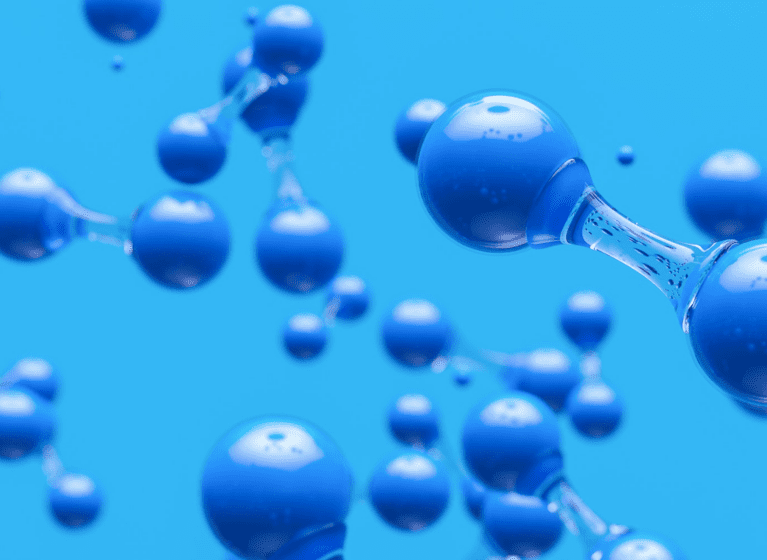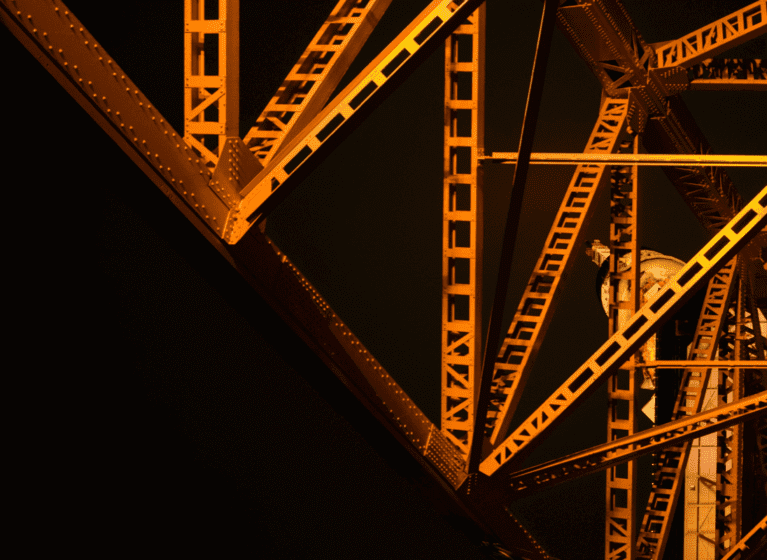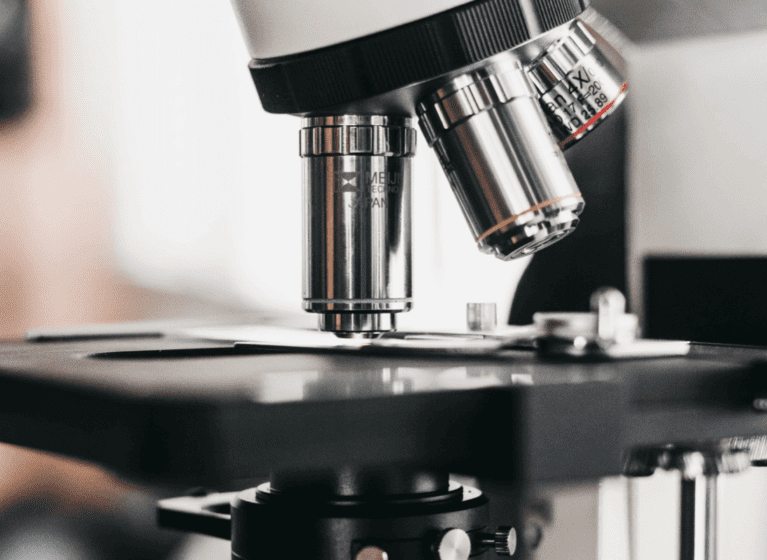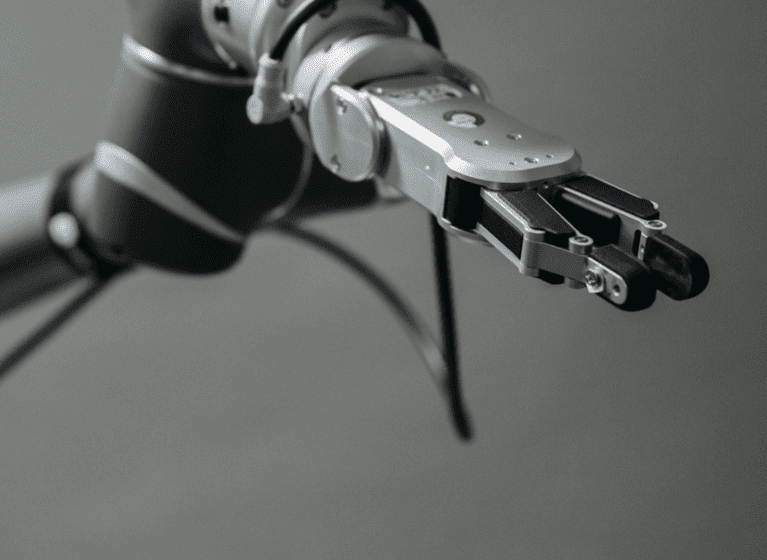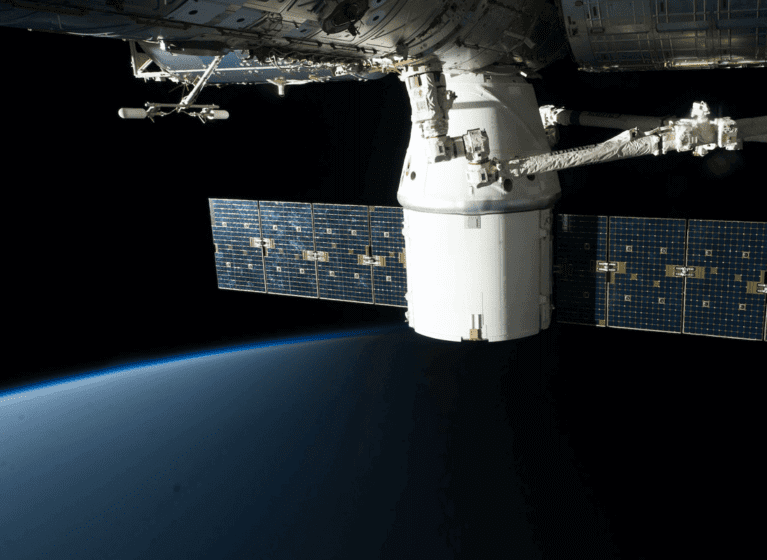Our Principals Tracey Hendy and Desmond Tan were again invited to join Miku Mehta on the Procopio podcast. In this episode, they were also joined by Shimpei Kuroda, Senior Manager of Shiga International Patent Office, to discuss the application (and the similarities and differences) of the patent grace period across different regions, specifically in Australia, Japan, Southeast Asia and the United States.
Listen to the podcast here:
Or read the transcript:
Welcome to Procopio Perspectives, a podcast featuring award-winning corporate and litigation attorneys providing useful legal insights on the latest issues of the day. Now, here’s your host.
Miku Mehta: Welcome everybody to our Procopio podcast series. My name is Miku Mehta and I’m a Partner in the Procopio law firm. I’m also Head of our Asia practice group. And today, I have three very esteemed colleagues from Japan, Australia, and Singapore, and we’re going to talk a little bit about the grace period.
Before we get into the details, I’d like to ask Tracey Hendy, Des Tan and Shimpei Kuroda to each give a little bit of introduction, just a few seconds about their background.
Tracey Hendy: Thanks Miku. I’m a Principal in the Melbourne office at FPA Patent Attorneys. I specialise in the complex mechanical arts for patents, as well as medical devices. Over to you Des.
Desmond Tan: Thanks, Tracey. I’m Desmond Tan, I’m the Principal managing the Singapore office of FPA Patent Attorneys. I’m in a similar space as Tracey in the engineering arts, overseeing the Southeast Asia practice for FPA Patent Attorneys as well. Over to you Shimpei.
Shimpei Kuroda: Thank you. And my name is Shimpei Kuroda from Shiga in Tokyo, Japan, and I mainly handle mechanical cases and have some experience in post-grant opposition cases, in validation trial cases, and a couple of infringement litigation cases. It’s the first time for me to attend this podcast, so I’m very pleased to be here. Thank you.
Miku Mehta: Well, thank you all for participating today, and I’m very excited to learn more about grace periods in each of your jurisdictions and share a little bit on the US, so let’s go ahead and get started.
I think we should start first with the term grace period and what is meant by grace period in your jurisdiction and any different types you might have. So let’s kick it off with Australia, Tracey, do you want to give a brief introduction to the grace period?
Tracey Hendy: Sure. We all know the dogma of patents law is to file your patent application before you publish the invention, but it doesn’t always work like that in the real world. So the grace period in Australia is a 12 month period of forgiveness for the inventor’s or the applicant’s own disclosures, which occur in that period 12 months before the filing of the complete application. We also have another kind of grace period which we call the reasonable trials grace period, which I’ll talk about later.
Miku Mehta: Sure. And then Shimpei, do you want to give a little bit on the Japan definition?
Shimpei Kuroda: Grace period in Japan is mainly interpreted as exception of the lack of novelty of invention due to the inventor’s activities.
Miku Mehta: And then Des, Singapore or any others in Southeast Asia?
Desmond Tan: Sure Miku. I’m happy to share a broad brush overview about what grace period is in Southeast Asia. Thing to note for Southeast Asia, it’s a diverse region in terms of population, in terms of economies, and also in terms of grace periods, because you have this exception for the loss of novelty. But there are differences in terms of the tenure, you know are looking at possibly six months, you’re looking at possibly 12 months in the different countries in Southeast Asia. And I’ll expand more about that during the course of this podcast.
Miku Mehta: Great. Well, I can give you a little bit of background. We haven’t had a grace period for very long in the United States. Until the America Invents Act, which became effective on March 16, 2013, we had a first to invent system. And under the first to invent system, we could swear behind, using conception, diligence, and reduction to practice in Rule 131 declarations as a basis for antedating. But since the AIA has come into effect, we have 35 U.S.C. 102(b)(1) which is a one year grace period. It’s a grace period based on one year from the earliest effective filing date, including provisionals, and it applies against self-disclosure as well as third party disclosure. So that’s what we call the grace period under US law, it’s more recent. As we’ll discuss, there probably are some distinctions or different ways of doing things.
So why don’t we dive a little bit more into the grace period. I think the first question, let’s get back to the scope. For example, with respect to self-disclosure, what is the scope of the grace period? Tracey, do you want to give the Australia view on it?
Tracey Hendy: The normal grace period is a fairly broad scope, it’s 12 months before filing the complete application. And when I say complete application, that would be equivalent to the PCT filing date. So what you need to think about is that if you’re going to rely on grace period in Australia, you need to file a PCT 12 months from your disclosure date. So if for instance the disclosure takes place first and then you file your US provisional for example, you don’t want to wait 12 months before filing your PCT, because then you won’t be able to take advantage of the grace period. You need to file your PCT somewhat earlier, being 12 months from when that disclosure took place. And then if you do that, you should be able to take advantage of the grace period.
Miku Mehta: So it’s 12 months, but it’s 12 months from the actual filing date, not the priority date.
Tracey Hendy: That’s correct. For the normal kind of grace period.
Miku Mehta: So Des, what about in Southeast Asia? Is there some similarities or differences, and what does it mean as far as self-disclosure?
Desmond Tan: Just some points to note for Southeast Asia, without digging into the details. For example in Thailand and Indonesia, they have a grace period if you self-disclose at an international exhibition. But if other type of self-disclosures, for example presenting to your potential clients, it wouldn’t fall within that grace period provision. So one thing to note in Southeast Asia is the differences in the types of grace period provisions that are available, and how it actually would affect where you can file your applications or the scope of protection that you can get in the different jurisdictions.
One thing to note is, Miku, you just mentioned, the US also has relatively new grace period provisions. Singapore has recently adopted grace period provisions that are pretty close to what the US has, simply because of the FTA that Singapore has with the US. So for US applicants, if you’re looking towards relying on grace periods akin to what the US provides, I think Singapore is a good option in terms of some peace of mind that what you are getting in the US would be similar to what you have in Singapore.
Tracey Hendy: I’m curious Des, in your situation, when do you need to file the PCT? Do you need to file that 12 months from the disclosure to take advantage of Singapore grace period?
Desmond Tan: That is true. And of course as you know, PCT, sure, you can rely on it, but only upon entry into national phase. So for example, upon entry into EP where they do not have grace period provisions, then it really doesn’t hold much water. But of course, enter into countries where they have grace period provisions, that’s where it matters. So over to Shimpei.
Shimpei Kuroda: For self disclosure in Japan, the applicant can rely on the grace period for most activities due to the intention of the inventor. For example, not only experiments, presentation at the conference, but also announcement to a stakeholder, sales of the products, and disclosure of the patent gadget cannot be applied. And same as Australia, an applicant needs to file a Japanese application or a PCT application within 12 months from the disclosure, not from a priority date in other countries, unfortunately. And in addition to that, the applicant must fill an application form to apply the grace period at the time of filing or entering in the national phase into Japan and submitting proving documents of the disclosure within 30 days after the filing date.
Miku Mehta: That’s very important Shimpei, because as we’ll talk about later, each jurisdiction may have different requirements for how to claim the benefit of the grace period. I think you mentioned this, but if an invention is unintentionally disclosed by a third party, what is the provision for an inventor to file an application? Is it one year from that disclosure date?
Shimpei Kuroda: If an invention is unintentionally disclosed by the third party, the inventor can file an application of the disclosed invention within 12 months from the due date of the disclosure.
Miku Mehta: But that’s the same invention that that inventor made, right?
Shimpei Kuroda: Yes, of course.
Miku Mehta: That makes sense, and that’s an important distinction from the US, which is for all third party disclosures essentially. So this is the basics of the self-disclosure aspects. I don’t know if Des or Tracey had any more comments on self-disclosure?
Tracey Hendy: In regard to self-disclosure where someone else has derived it after the disclosure, is that what you mean?
Miku Mehta: Yes.
Tracey Hendy: Yeah, within the normal grace period, it also contemplates that somebody else, a third party, may derive something from the inventor’s disclosure and then disclose it themselves. So if it can be proven that was derived from the inventor’s or the applicant’s disclosure, then that also falls within the grace period in the same way.
Shimpei was talking about the requirements in order to take advantage of the grace period, being that you need to file some documentation at the Japanese patent office, we don’t have any such requirement in Australia. You can just simply rely on the grace period at the time when the novelty is called into question on the basis of a particular disclosure. You can simply put up your hand at that time and invoke the grace period.
Miku Mehta: And Des, any thoughts on how you would execute on claiming a grace period?
Desmond Tan: Sure, Miku. So basically in Singapore, it’s a situation whereby when you request examination, you need to explicitly tick a box to say that you’re relying on the grace period provision, such that the examiner would have an idea what can or cannot be cited against the application. So it’s a bit more opaque in terms of the requirements in Singapore.
Miku Mehta: So in the United States, there’s no specific requirement to check a box or anything like that, if you’re relying on the grace period. However, under our duty of disclosure, we would typically file an information disclosure statement that includes the grace period disclosure. And in the application at the start of the application, where you list cross-references to related applications or federal funding or something like that, you can provide an explanatory paragraph of the grace period disclosure. Alternatively, you may receive a prior art rejection if you don’t do that, in which case you may need to file a declaration under Rule 130 to claim the grace period.
So that’s procedurally the US, I think the listeners can get an idea that you need to approach this in different ways in different jurisdictions. Very important is, Japan within 30 days for example, or Singapore with the application filing.
So I’d like to move on to another topic, which is experimental use in public, that is the purpose of the use is experimental and maybe intended to refine or test the technology. So Tracey, are there exceptions for such public experimental use, especially if the nature of the product is such that it must be tested in public in Australia?
Tracey Hendy: Yes, Miku. So what we were talking about earlier, I would call the normal grace period, so we have a second type of grace which we call the reasonable trials grace period. It’s a little bit different than the normal grace period, there’s more stringent criteria applied to it. So it has to be for the purposes of reasonable trial, and because the nature of the invention, it was reasonably necessary for the working to be done in public. Also, the time period is different for the reasonable trials grace period, it runs 12 months before the priority date. So it’s a little bit more forgiving in terms of time, less forgiving in terms of criteria that you need to satisfy.
Miku Mehta: Shimpei, how about Japan? Do you have experimental use grace period?
Shimpei Kuroda: Yeah, of course. As I said, most activities can rely on the grace period as a safe disclosure. So an applicant can rely on the grace period by filing the application within 12 months from the experimental use, and there is no difference in requirements among the types of disclosure.
Miku Mehta: How about Des, what do you see with experimental use grace period exceptions in Singapore and Southeast Asia?
Desmond Tan: So in Southeast Asia, there should be an appreciation that the region as a whole has a policy to attract a lot of domestic investment. So basically, experimental use grace periods is quite consistent throughout the region, because the respective governments appreciate that it’s quite critical to have that provision to allow more investment to come into the region. Typically, if there’s reliance on experimental use grace period, Southeast Asia is a pretty safe bet in terms of being able to rely on it.
Miku Mehta: That’s nice. So the US situation is a little bit more ambiguous because prior to the AIA, the America Invents Act, we had the experimental use exception and first to invent system. Under first to file, it’s not that clear, there wasn’t as much in the legislative history about it. It really goes to the definition of whether the use can be considered public or not. I think you’re a lot safer trying to keep experimental use out of the public where possible, or if you are not sure if it would be considered public or not to resolve the ambiguity in the favour of documenting the date and filing a provisional related to that within one year, or if you’re going into your jurisdictions a provisional might not be enough. So just be aware of that if you’re internationally filing off of experimental use as a triggering event for the grace period.
There’s another area of interest, I think it’s referred to as whole of contents. This is a situation where a document has an earlier priority, but may not have been published at the time of filing or prosecution of the application. Tracey, do you want to explain more about how whole of contents is applied in Australia and the interaction of this with respect to grace period?
Tracey Hendy: Sure, Miku. Whole of content situation arises, typically applicant will file a first application, it’s got an earlier priority date, then files a second application and it has a later priority date. And at the time of filing that second application, the first application’s not yet published. Of course, these need to be Australian applications but you could treat a PCT designating Australia also as an Australian application. So there’s this overlapping of filing dates and publication dates.
Now, with your own earlier application being a whole of contents prior art, in order to succeed with the later application, you need only have novelty. The earlier prior art is not taken into consideration for inventive step. But depending what you’re trying to claim in the second application, that might not be sufficient. So you can also rely on the grace period to remove your own earlier prior art from the prior art base entirely.
There’s a couple of different scenarios which can arise because as you can imagine, you’ve got three dates, you’ve got priority date, you’ve got filing date and publication date, and they may overlap in different ways. There’s two basic scenarios which can arise, I’m not going to explain them in detail, but one of those scenarios has been confirmed by the Federal Court that the grace period can be applied to whole of contents novelty. In the second scenario, we don’t have Federal Court affirmation that you can apply it, we have a patent office decision, but from where I sit I think it’s a bit stretched. But the rule at this point in time is that the grace period can be applied to a whole of contents prior art citation. Doesn’t happen very often, it’s usually a result of some unusual filing strategy adopted by the applicant.
Miku Mehta: Des, how about in your jurisdictions?
Desmond Tan: As I mentioned earlier, some countries don’t really have very pervasive grace period provisions. So something, as I would say complicated, as this probably doesn’t need to be considered that much in depth for Southeast Asia. Over to Shimpei.
Shimpei Kuroda: The Japanese practice doesn’t have such grace period for this situation. But if a prior application A is published in Japanese language after filing a later application B and the applicant of the applications A and B is identical at the time of filing date of the later application B, in that case the publication of the former application A is not treated as a prior art document in the examination of the later application B. But it’s not a common case that we have such a case.
Miku Mehta: As you say, it’s typically not a common case, and I think probably the same thing is true in the United States. There’s one additional wrinkle which is that under US law, you can file a request for non-publication such that the application would not publish until it is granted. That’s a rare circumstance in which the application would not publish at 18 months. Now it’s possible to foreign file on that, so it may not affect the strategy in neighbouring jurisdictions, but something to keep in mind.
So we’ve talked a little bit about what the grace period is, self-disclosure, experimental use, and the whole of contents. What I’d like to do now we have some examples and variations, just do a quick summary before we jump into the next section of our discussion. And what I’d like to do is ask each of our podcasters to give a quick summary on what you feel the main difference is for the grace period in your country compared to the other jurisdictions. And Shimpei, I’d like to ask you first with respect to Japan, give your thoughts.
Shimpei Kuroda: It’s the main point, but unique applications should be filed within 12 months from the disclosure, not 12 months from the priority date. And for safe disclosure, the applicant must fill an application form for applying the grace period at the time of filing or entering the national phase into the Japan, and submitting proving documents within 30 days is the main difference.
Miku Mehta: Des, what do you feel are the differences as applied here?
Desmond Tan: I guess from a Southeast Asia perspective, if you tell me that you’ve got a situation of experimental use, I would say let’s delve into this deeper. If you tell me you have a situation where you have displayed at an international exhibition, I would have the same answer to you, let’s delve into this a bit deeper. But if you tell me self-disclosure, then first of all a red flag will come up to say maybe you can’t rely on the grace period in certain countries. So I guess to me, self-disclosure immediately will raise a flag for certain countries within Southeast Asia, but the earlier two scenarios generally, it is pretty acceptable to rely on grace period provisions for international exhibitions and experimental use. So over to you Tracey.
Tracey Hendy: So similarities, I see Japan, Australia, and Singapore being similar in that the grace period runs 12 months before the filing date, which would be equivalent to the PCT filing date, which is different from my understanding from the US where the grace period runs 12 months before the priority date. So that could be a bit of a pitfall just to be aware of.
The other difference with Australia, we have no requirements that need to be fulfilled in order to rely on the grace period. Well, there’s no requirements to be fulfilled during the course of the application, it’s just that when you need to rely on it, then you would have to put some evidence forward I imagine, depending on what the nature of the disclosure is.
Miku Mehta: I think for the US, it’s clear some of the differences with respect to the filing date. We can very easily use a provisional application and take the earliest effective filing date for protection in the US. But if I file a provisional within one year of the grace period, that may not be effective for some or all of your jurisdictions. And then the other thing is that the grace period can be more broadly used, especially under 35 USC 102(b)(1b) with respect to third party disclosure, there’s no rule that it has to be accidental or even the subject matter of the applicant. It’s a much broader grace period, and some people say it almost creates a first inventor to make public kind of system possibly. And then how it’s done is very different in all of our jurisdictions, how you go about either claiming the benefit or when you need to claim the benefit, looks like there’s some differences.
So you can see that if you’re planning to have international protection and you’re having disclosures before or around the time of patent filings and you’re concerned about where and how to use the grace period, you’re going to have to look at each jurisdiction differently and independently.
Let’s get into some facts, specific scenarios and hypotheticals, so we can see how this might play out. And then at the end, we’ll talk a little bit about the kinds of policies and tips that can be applied to help us in these situations. So we have a couple, the first one is non-written activity, including the presentation of video, audio, or demonstrations or things that you say or do at a trade show or an event where there is no actual written material. Let’s talk first about Australia and then Japan. Tracey, what would you say about non-written activity?
Tracey Hendy: Well Miku, anything that is novelty destroying, whether it be written or non-written, that can be grace period-ed out. Is that an expression? Let’s just say that can be forgiven under the grace period.
Miku Mehta: And Shimpei, how about Japan?
Shimpei Kuroda: If a person skilled in the art can understand the invention through the non-written activity, for example the demonstration or something like that, the invention loses novelty. So in that case, the persons making the activity should apply a grace period.
Miku Mehta: And Des, anything on the non-written activity for Singapore or Southeast Asia?
Desmond Tan: I guess the circumstances where this disclosure is carried out plays a substantial role. For example, if it happens at a major trade show like CES or some major motor exhibition show, typically it’s okay because it falls within the definition of international exhibition. If it is self-disclosure, you’re going to have issues in Thailand, in Indonesia, where they are less forgiving in relation to such novelty destroying disclosures.
Miku Mehta: I’ll say US broadly follows that there’s no limitation on public being written or having to be written. Some of it would be a question of documentation and proof of it having happened. We have to be able to prove the date that it happened, we have to be able to say what was the disclosure and how far did it go. So it’s more questions of proof, but it could be considered under the grace period. Usually if you present a paper, there’s some kind of publication or presentation that goes along with that, that has a date on it that can be submitted in an IDS or something like that, but we have to be aware and careful about these situations.
So let’s try another scenario. How about product that is demonstrated or publicly shown or somehow put into print where the product generally is shown, but maybe some internal details of the invention are not completely visible. Maybe they could be inferred, but it’s not explicitly shown. Shimpei, let’s start with you this time, how about in Japan? How would that play out?
Shimpei Kuroda: Usually, these kind of disclosures don’t destroy the novelty, but it’s not a common case. But if a person skilled in the art can understand the invention through the demonstration, the invention loses novelty.
Miku Mehta: Tracey?
Tracey Hendy: In a similar way, it probably wouldn’t be novelty destroying, there’s no clear and unmistakable directions in the demonstration. But sometimes exceptions to that, if the demonstration was accompanied by a sale, then that situation could be novelty destroying.
Miku Mehta: Des?
Desmond Tan: From a general approach, it is unlikely to be novelty destroying.
Miku Mehta: Now, we’ve talked about some of the different scenarios and you can see how it gets a little bit more complex as you go to different fact specific situations.
We’re going to have a little fun now with a hypothetical, let’s give this a shot and see how things play out in each of these jurisdictions. I’ll just set out the facts and then we’ll run them through each of these jurisdictions. So let’s say you have an invention that’s a method, and it’s a method of adding a fluorescent dye to an industrial fluid, and it operates such that a fluid that is accidentally injected into a person could be identified using UV light.
So under this scenario, we’ll go through chronology, let’s go back to October 2019. At the time, that inventor said that, okay, well it’s going to be necessary to test this out in real mining equipment. So the inventor went to a mine and approached an engineering manager at that mine in Australia. First, the inventor explained his proposed inventive method and asked about the possibility of doing tests and trials and experiments at the mine to test the viability and how it works.
Then a month later in the parking lot, the car park of the mine, the inventor demonstrated his invention to two of the managers of the mine. And during that demonstration, the patentee had disclosed it in such a way that he couldn’t necessarily be sure that the disclosures were made in confidence. In other words, while there may have been some kind of agreement with the mine, there may not have been an agreement or the managers may not have been aware that there was any confidence between them. So then moving on, there were trials that were conducted in the mine, and there were conducted on hydraulic mining equipment in June of 2020, without any confidentiality agreement and the mine workers were aware that there was this added fluorescent dye.
Then fast forwarding, September 2nd, 2020, the inventor filed the patent application in this case, let’s say your jurisdiction, Australia, for the method. Then within one year after that, an international application was filed, September 2, 2021. So you have October 2019 and then within 12 months, you file a patent application in Australia, or Japan, or Singapore let’s say. And then within 12 months from that, you file the PCT application.
So basic questions, can the inventor rely on the grace period for the disclosure to the manager, for the disclosure to the two people in the parking lot who work in the mine, and for the actual experimental use in the mine. Tracey, do you want to give this one a shot?
Tracey Hendy: Yeah, sure. Thanks Miku. Well, it’s pretty bad news unfortunately. So we take the PCT filing date of September 2nd, 2021 as the equivalent to the complete filing date in Australia. So your grace period under the normal grace period is going to run back 12 months before that, which would take you to the 2nd of September 2020. But you’ll see all of those activities which took place occurred before that and they didn’t fall within that normal grace period of 12 months, for the normal kind of grace period. So then we say, okay, well, can we apply the reasonable trials grace period, because the reasonable trials grace period runs 12 months before the priority date and all of those activities do fall within the reasonable trials grace period. But the reasonable trials grace period has more stringent criteria attached to it, it has to be for the purposes of reasonable trial and it has to be, because of the nature of the invention, reasonably necessary to be worked in public.
So while the trials themselves would be forgiven under the reasonable trials grace period, the other two activities of the disclosure and the demonstration at the car park, they’re not considered reasonable trials. They’re activities which could have been done in confidence, and it was only really the working on the real mining equipment which needed to be done more or less in public I guess. So the trials were forgiven, but not the two earlier activities. They were therefore considered to be novelty destroying, and as a result the patent was invalid. And that was a Federal Court decision in the last few years.
Miku Mehta: Oh, so it is not so good news.
Tracey Hendy: Yes, it’s a narrow exception.
Miku Mehta: Yeah, it’s narrow.
Tracey Hendy: The takeaway from that is that while you have an excuse for reasonable trials, activities which lead up to you being able to secure the trials and make them happen may not be forgiven. The court didn’t decide where they were going to draw the line because there would be some activities. You might put some signs out to say, there’s a test going on, warning signs, keep away or something like that, that would probably be okay, but other activities leading up which are not actually involved in the trials are not forgiven.
Miku Mehta: It’s an important point and these are actual factual situations, so it’s important to see what the courts have said. Shimpei, onto you, how about in Japan in this scenario?
Shimpei Kuroda: Unfortunately, due to the time limitation and since the application is filed in September 2020 in Australia, and the PCT application or Japanese application is not filed within 12 months after the disclosure, applicant cannot rely on the grace period in Japan. But if the Japanese application or PCT application is filed on September 2020 in Japan, the applicant could rely on the grace period based on the disclosures 1, 2, 3, these disclosures. The applicant can rely on the grace periods based on these activities in Japan.
Miku Mehta: Thanks. And Des?
Desmond Tan: This is quite a broad based situation, so I’ll try to crystallise it into simple questions. Number one, is it considered experimental use? Number two, what’s the duration that we are relying upon? So if it constitutes experimental use, there is some possibilities that you can rely on the grace period in some of the Southeast Asia countries. But if you can’t even massage the story into a definition of experimental use, then it becomes quite tricky to rely on grace period provisions in Southeast Asia. The other thing would be, for example in Indonesia, you’ve only got a grace period provision lasting six months. So anything close to 12 months, beyond 12 months, definitely it’s no go as well.
I guess for relying on Southeast Asia grace period provisions can be crystallised into simple questions that can be quite helpful for applicants to make a first cut whether or not to even proceed to file patent applications into Southeast Asia.
Miku Mehta: And for all of you, this brings up a good point, because in the United States, we have this hypothetical here that is based on actual case, we don’t yet have, due to our young grace period, relatively, we don’t have much case law that flushes out some of these issues. But if we go straight from the statute and we say that there is a disclosure by the inventor to a third party, and within 12 months we filed an application that constitutes the earliest effective filing date, it would seem the result could be very different from the other jurisdictions, right? Because we have a grace period that doesn’t have intentional versus unintentional, it could even be a third party disclosure. The experimental use issue doesn’t come up in the same context. Also, the application, as long as it’s the earliest effective filing date as opposed to the actual filing date, can be used. So we can see this example is really good because it brings up the differences in different jurisdictions.
Let’s talk about, any other comments on the example, on this hypothetical?
Tracey Hendy: I would just say that, I think Shimpei said it, the PCT or the complete application in Australia should have been filed on the second of September 2020, not waiting another year.
Miku Mehta: Right, maybe you lead off and just file a PCT and then nationalise into Australia, right? Or do both at the same time.
Tracey Hendy: Yes, we could do that.
Miku Mehta: Yes, that’s a good point.
Let’s move on, and now we’ve gone through the hypothetical, some scenarios, examples and situations for the grace period, so what do we do? What are some of the things that we can do? First of all, let’s just recap, we talked a little bit about this, but let’s just give a quick summary. When you file an application in your jurisdiction, what are the things that you need to do at the time of filing to invoke the grace period, if any? And then what do you do during prosecution, either if you get an office action or an issuance, what are the main things you need to do? Shimpei, let’s start with Japan.
Shimpei Kuroda: As I said, applicants need to file a Japanese application or a PCT application within 12 months from the disclosure, not from the priority date. And applicants must show the intention for applying the grace period at the time of filing or entering the national phase into Japan, and submit proving documents of the disclosure within 30 days after the filing date. So you need to prepare some documents when filing that application in Japan.
Miku Mehta: And Tracey for Australia, you had mentioned before, but if you can just come back to that.
Tracey Hendy: There’s no special requirements. If an examiner asserted some prior art during examination, you could ask, and it was the grace period applied, then you would just argue that the grace period should apply and it should be removed from the prior art base.
Miku Mehta: And Des?
Desmond Tan: In Southeast Asia, there are certain countries where you got to make a declaration upon filing, there are certain countries where you got to make declaration upon requesting exam. So the important thing would be you got to let your attorney, your agent on the ground, know the situation such that declarations are made in good faith, the application is always for clean hands, that’s very important, because it’s not as forgiving as Australia to invoke it at the appropriate time. You got to make sure that this grace period provision is in place before you can invoke the situation in Southeast Asia.
Miku Mehta: Along those lines, in the United States, we obviously have a duty of candour, a duty of disclosure to the USPTO, and under that duty we file an information disclosure statement because this is clearly material to patentability. And we also would put a statement in either a letter or in the specification itself explaining the grace period event and that the grace period disclosure was by the inventors of the claims, and then the USPTO would be aware of it at the start of examination or at the time of application.
The other thing to do is if the grace period publication is cited or if there’s some intervening third party prior art that’s cited and the grace period is relied upon, then you may need to file a Rule 130 declaration during prosecution. Although again, the rule is relatively new, just from 2013, under AIA, the statutory change, and so there aren’t too many examples and there isn’t too much case law on this. So you can see again, we have this difference.
So let’s talk for a minute about what can a client do in terms of policy to manage the risk or minimise the risk while taking advantage of the grace period? Tracey, you want to go?
Tracey Hendy: Yeah, bear in mind that any third party wanting to invalidate the patent, would need to get hold of prior art information, so may want to be careful. The risk is, well, how much do you document? Because it might be something within the grace period, but then again it might not fall within the grace period I’ve given you. We just had that hypothetical which didn’t fall within the grace period, how much do you want to document all those activities?
Miku Mehta: It’s a good point, having a policy as to when and when not to document. And when in doubt, work with your local counsel and worldwide counsel to come up with a consistent policy that’s going to work for your main countries of interest. So that’s a good point on documentation. How about Shimpei?
Shimpei Kuroda: Application must be filed within 12 months from the first disclosure in Japan, so the companies should control when the disclosure is performed. And in addition, when the third party disclosed their original invention identical to the disclosed invention before filing the application by the applicant, the invention by the applicant can lose the novelty by the disclosure by the third party. So the clients should file the application as soon as possible.
Miku Mehta: Des, any added thoughts on this?
Desmond Tan: Sure, Miku. Having been an in-house counsel in an earlier part of my career, I actually was pretty insistent that the management enforce a data logbook system amongst the R&D team, because no company wants to rely on grace period first and foremost, but the logbook is there to ensure that inventions are harvested as and when they come up with, and that should be the main focus of documenting R&D efforts in the company. If discovery comes about, it’s a tricky question. When I was in-house, we didn’t want to think about grace period and thought more in terms of harvesting R&D as and when they came up. So that was a contrary approach to what Tracey was suggesting earlier on.
Miku Mehta: I think it does make a difference, you have to think more about jurisdictions other than your own jurisdiction to understand the differences sometimes. So if you’re only filing in one jurisdiction, fine, but if you have international protection, I would say you should have a policy that first of all explains in R&D, if you have a disclosure, what is the policy to document, like Tracey was saying, and how do you document it? And then you have to involve your local counsel in those jurisdictions very early.
And maybe I’m not filing first in the United States because I can use the effective filing date, maybe I need to file first in Japan. And when I do that, I need to disclose the situation of the grace period. But what if I don’t want to do that? Maybe I need to look back and even say, well, is this worth filing now that we’ve disclosed it in this way, or do we want to publish it or do something else?
So I think we need to have a way to quickly escalate and make decisions on these events, as rare as they are, when they happen, especially for critical technologies.
Tracey Hendy: Yeah, break the glass is what you do.
Miku Mehta: Yeah, emergency plan. So the last thing at the end I thought we would do is a little bit of a takeaway, maybe if you have one or two quick closing points from each of the panelists. Tracey, what would you like to tell us as one quick closing point on this topic of grace period for Australia?
Tracey Hendy: I would say stay on the straight and narrow, don’t give your corporate counsel a nightmare of trying to work out all the different combinations and permutations of relying on grace period in all the different jurisdictions. It’s just far better to stick to file before you publish dogma.
Miku Mehta: File before you publish. And then so Shimpei, what would your takeaway be?
Shimpei Kuroda: Of course, there is a pros and cons in grace period, but a wide variety of self-disclosed activities can be applied for the grace period. So the companies can be aggressive in their sales promotion for example, but please remember the time limitation.
Miku Mehta: Right, that’s a good point. Des?
Desmond Tan: I guess my takeaway would be the fact that there are differences in Southeast Asia countries for grace period provisions, but I wouldn’t say that it’s definitely a no-go if you’ve got to rely on grace period provisions for Southeast Asia. There’s a lot of foreign investment coming to Southeast Asia, so if you can for some way rely on whatever provision, get some IP protection, get some patent protection, you should exploit and not disregard the possibility, because some countries are more generous than others in the 11 country grouping of Southeast Asia.
Miku Mehta: Thanks Des, and Tracey and Shimpei. I don’t have much to add in the way of takeaways, you pretty much covered it all, just be aware of these differences. For the US, I would only mention that there’s a third party disclosure and ability to file from an earliest effective filing date. So it’s possible if you can’t access the grace period in your own jurisdiction, you may still be able to file in the United States, if that’s an important market, so just be aware. And there may be some situations where you have to pick, not all of the jurisdictions you want, but you can choose some of them and you have to decide if it’s worth it. It’s very nuanced, I guess that would be my takeaway.
So great, this has been really interesting and educational. I’m very grateful for your time, Tracey, Shimpei and Des. I want to thank the listeners for listening today and wish you a wonderful rest of the day. Thank you very much.

